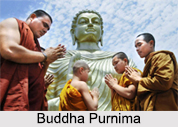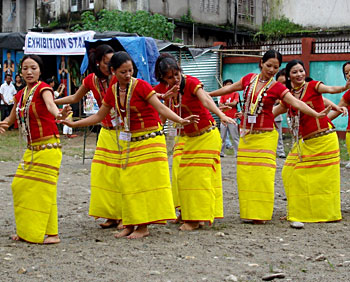 Cowdung Govardhan is the deity of Hindu community. In the Braj Bhasha area of northern India, the Annakut or Govardhana puja festival is one of the most important festivals.
Cowdung Govardhan is the deity of Hindu community. In the Braj Bhasha area of northern India, the Annakut or Govardhana puja festival is one of the most important festivals.
Observation of Cowdung Govardhan Puja
Cowdung Govardhan Puja is celebrated in the Karttik month i.e. on the day following of Diwali. This festival is given even more importance than Diwali. In this festival, the cowherd tribes worship Govardhan as their deity.
Annakut
The name of the festival, `Annakut` refers to the huge mound of rice placed in front of the Govardhana deity. Row after row of various foods, both kacha and pakka, are displayed behind this mound. The effigy of their deity is made with cowdung paste and hence the name `Cowdung Govardhan`. The local Brajvasis participate in the celebrations and then occurs the subsequent `looting` of food. They also go to the Mukut Mukharvind shrine, where the celebration is held accompanied by a simplified ritual.
Rituals of Cowdung Govardhan Puja
The people perform the ritual of the Govardhan puja either in their village streets or in the courtyards of their homes after moulding their `cowdung Govardhan`. The festival has its root in an ancient pre-Krishnaite cattle-rite. In this ancient festival of the cowherd tribes, Govardhan aka Giriraj is recognized simultaneously with the mountain of food and with the divine hill, as a source of wealth and sustenance.
Govardhan Festival
The Govardhan Festival itself is interpreted diversely and celebrated mainly by the Vallabhite and the Gaudiya Vaishnavas. The Brajvasi cowherd people on the other have their own interpretation and way of celebrating this festival. The Vallabhite worship the Cowdung Govardhan in a more elaborate and rich way followed by that of the Gaudiyas. But in both the sectarian traditions, the identity of Krishna Gopal with the Lord of the hill is taken for granted and in both, the celebration centres on the presentation of the food and its subsequent distribution, as sanctified "Prasad", to the participants.
Effigy of the Cowdung Govardhan
The effigy of the Cowdung Govardhan is made in a rather shapeless style. This Govardhan effigy is ceremoniously circumambulated by cowherds and cattle in the evening and then crushed into the ground by the hooves of cattle. During this festival more or less obscene songs are sung in honour of Giriraj. It is not conducted by any Brahmin priest officially. The cowdung Govardhan effigy can be identified by certain characteristic features. These features include a large squarish `body`, surmounted by a rounded head. These features evoke the shape of the original slab of stone worshipped at Jatipura as at Mukharvind. The Brajvasis add two symmetrical `arms`, which are raised at a straight angle from the `body` and two large feet below to their cowdung Govardhan. One can see what looks like an oversize penis called langula between the parallel cowdung feet. The word `langula` means both `penis` and `plough`. The milk is poured in the `tond` i, e, the `Pot belly` of the `Cowdung Govardhan` deity and the other food offerings brought by the participants are piled up. All the devotees have direct access to the tond.
The effigy of the `Cowdung Govardhan` is encircled by an enclosure, which is also made of cowdung paste. Several ball-like cowdung objects are placed, which apparently represents cowherds and cows as found in the ancient representations of the original Govardhan hill cave within the enclosure. There is an interesting fact that the cowdung `fence` around the effigy remains open just below the langula as if a secret passage existed linking the Govardhan cave itself with the lower world. There are long white sticks planted on the body of the `Cowdung Govardhan`, which bears white cotton tufts on top. The meaning of it is not very clear but the most probable interpretation is given that of fertile crops.
Importance of Cowdung Govardhan
The cowdung or `govar` is said to have magical fertility power and this fact is accepted well in India and some other countries also. Govar is seen as such in all the cattle festivals held in various parts of India, including some indigenous festivals with or without reference to Krishna Gopal. Most of such festivals coincide with the Braj Annakut festival of Cowdung Govardhan. All these rural cow dung rites widely spread in northern India have an ancient pre-Aryan character. The presence of two symmetrical `arms` in the cowdung effigy of Govardhan in Braj does not reveal the identity of the deity. At the present time, Govardhan is identified with the cowherd god Krishna Gopal. But it is also identified with Krishna`s younger brother, Baldev or with both gods together. The identification of `Cowdung Govardhan` with Baldev has some reasons behind it. The songs sung by women during the festival are known as him, i.e. abhira songs, sung by people of the Ahir Tribe , Kutch, Gujarat.



















